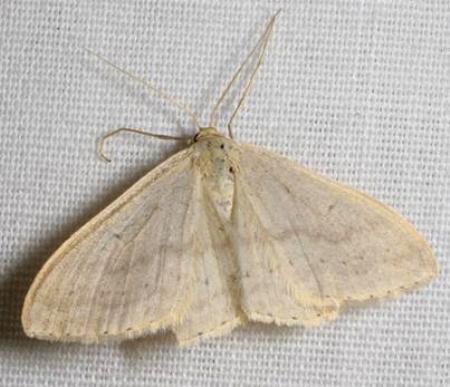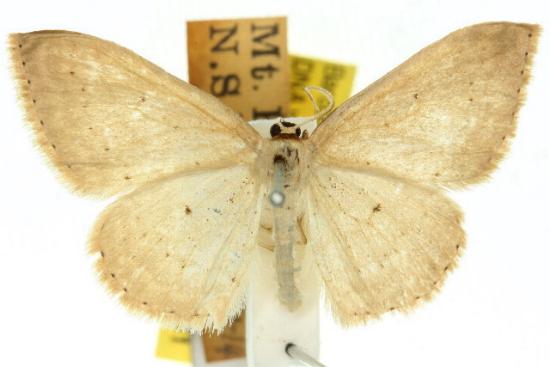
| Liotis Wave (one synonym is Acidalia compensata Walker, 1861) STERRHINAE, GEOMETRIDAE, GEOMETROIDEA | (donherbisonevans@yahoo.com) and Stella Crossley |

(Photo: courtesy of Marilyn Hewish,
Moths of Victoria: Part 4)

| Liotis Wave (one synonym is Acidalia compensata Walker, 1861) STERRHINAE, GEOMETRIDAE, GEOMETROIDEA | (donherbisonevans@yahoo.com) and Stella Crossley |

(Photo: courtesy of Marilyn Hewish,
Moths of Victoria: Part 4)
This adult moth is pale brown, with each wing having a marginal and submarginal arcs of dark dots, two vague wavy grey transverse bands, and often a dark dot near the middle. The wingspan is about 3 cms.

The species has been found in:
This Australian species was originally named Acidalia compensata by Walker in his journal in 1861, but Walker had previously named a different American species with the same name, 53 pages earlier in the same journal. So Meyrick, in redescribing the species 27 years later, disambiguated the situation by renaming the Australian species Acidalia liotis. McQuillan and Edwards moved it to the genus Scopula in the Checklist of Australian Lepidoptera in 1996.
Further reading:
Peter Marriott,
Moths of Victoria: Part 3,
Waves & Carpets - GEOMETROIDEA (C),
Entomological Society of Victoria, 2011, pp. 8-9.
Edward Meyrick,
Revision of Australian Lepidoptera II,
Proceedings of the Linnean Society of New South Wales,
Series 2, Volume 2, Part 4 (1888), pp. 854-855, No. 20.
Francis Walker,
Geometrites,
List of the Specimens of Lepidopterous Insects in the Collection of the British Museum,
Part 23 (1861), p. 724, No. 124.
Francis Walker,
Geometrites,
List of the Specimens of Lepidopterous Insects in the Collection of the British Museum,
Part 23 (1861), p. 777, No. 240.
 caterpillar |  butterflies |  Lepidoptera |  moths |  caterpillar |
(written 1 June 2018)